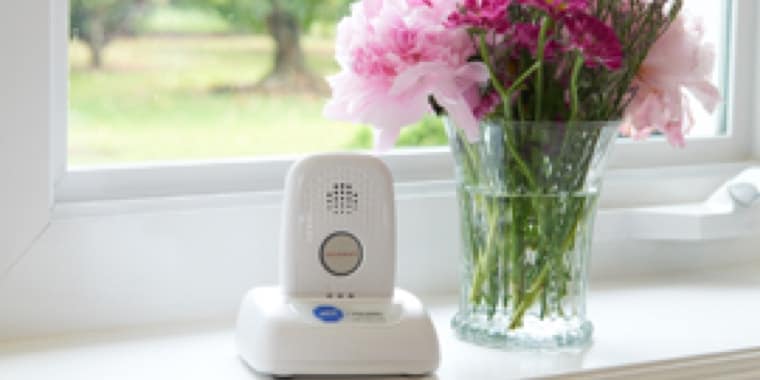There are many benefits of cultivating indoor plants, as well as gardening, in general; but, depending on where you live, you might not think it feasible to grow your own plants—and that's where you're wrong!
Big perks of indoor plants
Plants add a homey touch to any space, and greenery can brighten up a room, but plants bring more to the table than simple aesthetic appeal. The following are some of the noteworthy benefits of growing plants in your home:
Improved air quality
Research has shown that plants can remove volatile organic compounds from the air, improving the air quality in your home. According to Bill Wolverton, a former NASA research scientist, you should aim to have two good-sized plants per 100 square feet. He recommends the golden pothos—a popular, low-maintenance plant—for indoor gardeners.1
Reduced stress levels
Interacting with plants has also been proven to reduce stress. In a study published in the Journal of Physiological Anthropology, researchers found that repotting a plant not only reduced stress but also decreased participants' diastolic blood pressure.2 Not too shabby!
Higher levels of productivity
But that's not all. If you work from home, having plants in your office may even boost your productivity. Research from the University of Queensland found employees were happier and 15 percent more productive when there were plants around.3
How to start a garden in your home
Are you convinced that plants would be a good addition to your home? If so, refer to the guide below to figure out the best options for the size and shape of your living space.
Apartments
Many apartment dwellers think they can't have indoor plants because they lack space and light, but that's not true at all. There are several varieties of low-light plants that will thrive in just about any apartment, many of which take up minimal space.
Some of the best apartment plants include:
- Peace lilies: These hardy plants need little light, and they'll bounce back even if you forget to water them.
- Spider plants: These popular plants are perfectly happy in low light and with crowded roots, and they even propagate themselves, growing little spidery babies.
- Succulents and cacti: If you tend to forget to water plants, you'd do well with a few succulents or cacti, which require minimal water.
- Herbs: If you have a sunny window in your apartment, it's the perfect spot to grow potted herbs like basil, parsley or oregano.
Suburban houses
Chances are that suburban homeowners have a little more space for plants-maybe you even have a yard or patio. Here are some great plants that may thrive in your space:
- Majesty palms: These big, beautiful plants need ample light and humidity, so place them in front of a big window and watch them grow.
- Rubber trees: These lovely trees will grow several feet tall if you let them! They like a well-lit area, and you can let their soil dry out between waterings.
- English ivy: Want to try your hand with a hanging plant? English ivy is a beginner-friendly plant that looks simply charming when hanging from the ceiling.
- Cherry tomatoes: Even if you just have a small patio, you can still grow your own tomatoes. Cherry tomatoes are incredibly easy to grow in the summer—just put a few starter plants in a large planter, give them a cage to climb and watch them flourish!
Rural homes
Do you live out in the country, where grass grows for miles? If so, the sky is the limit when it comes to what you can grow.
Embrace some of the indoor plants listed above, or try your hand at an outdoor garden with these flower and vegetable varieties:
- Sunflowers: As their name suggests, sunflowers need plenty of sunshine to flourish; but, besides this, they're an easy plant to grow outside.
- Pansies: These adorable flowers are a spring must-have to brighten up your yard. Most home improvement stores sell ready-to-plant varieties that you can just plop in your garden.
- Tomatoes: With the help of a few starter plants, you'll be able to grow happy, healthy full-size tomatoes.
- Zucchini: Wait until warm weather has arrived to plant your zucchini, and you'll be rewarded with an abundant harvest—even if you only have one or two plants.
Gardening and plant safety
Before you jump into gardening, it's a good idea to familiarize yourself with some basic plant safety. For instance, there are several poisonous plants for cats and dogs that you don't want to bring into a home with pets.
According to the ASPCA, popular poisonous plants for cats include4:
- Aloe
- Snake plants
- Sweet peas
- Tulips
- Daffodils
Harmful plants for dogs include:
- Chives
- Chrysanthemums
- Geraniums
- Golden pothos
- Morning glories
Due diligence
As you can see, there are plants that will thrive in a variety of living situations, so there's really no reason not to bring greenery into your home.
Resources
1 Heid, Markham. "Can Indoor Plants Really Purify the Air?" Time. January 17, 2018. Accessed March 22, 2018. http://time.com/5105027/indoor-plants-air-quality/
2 Lee, Min-sun, Juyoung Lee, Bum-Jin Park, and Yoshifumi Miyazaki. "Interaction with Indoor Plants May Reduce Psychological and Physiological Stress by Suppressing Autonomic Nervous System Activity in Young Adults: A Randomized Crossover Study." Journal of Physiological Anthropology. April 28, 2015. Accessed March 22, 2018. https://www.ncbi.nlm.nih.gov/pmc/articles/PMC4419447/
3 "Leafy-green Better than Lean." UQ News. September 01, 2014. Accessed March 22, 2018. http://www.uq.edu.au/news/article/2014/09/leafy-green-better-lean
4 "Poisonous Plants." ASPCA. Accessed March 22, 2018. https://www.aspca.org/pet-care/animal-poison-control/toxic-and-non-toxic-plants/





